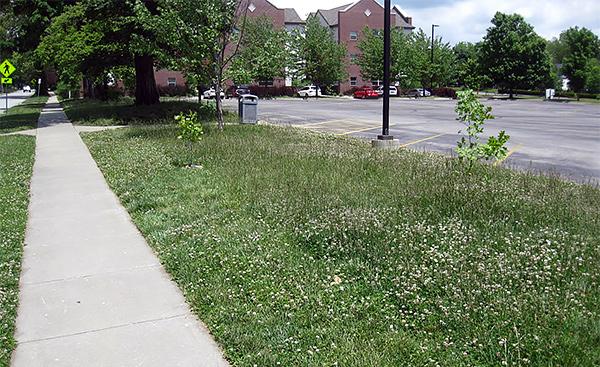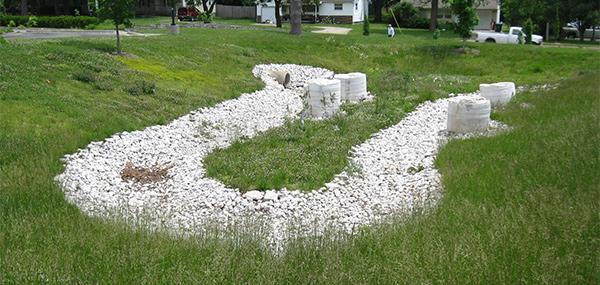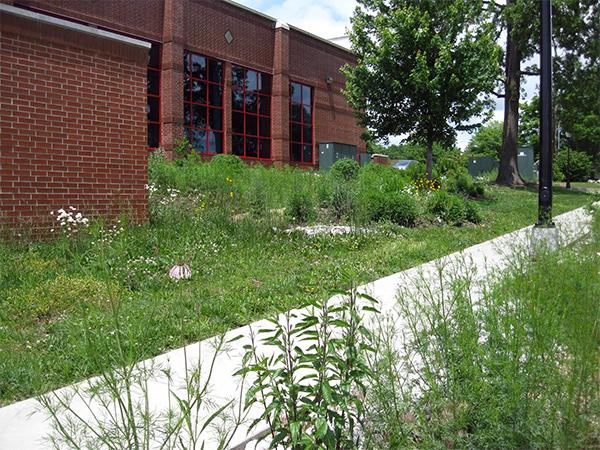Dog Run Sustainability
Everyone is reasonably familiar with the concept of a dog run. Dog runs can be a fenced area, usually rectangular, or a leash of sorts on a length of cable. Both configurations are meant to give the dog the maximum freedom of movement without giving the dog so much leeway that he can escape the yard, or be a nuisance to neighbors. The dog has some space, but is still held securely in a specific area.
I often think that green industry sustainability is like a dog run. Freedom to move within a specified and seemingly large range, but always securely tethered to some confining limitation.
Consider This
Several years ago I was reading a grounds industry journal that was heralded as the 'sustainability issue'. The cover showed a picture of a worker shoveling compost out of the back of a utility vehicle, in some landscape application, over a caption paraphrased as The New Face of Sustainability. The message, with which I agree, was that using compost is a sustainable practice. My problem was the use of the UTV as a means to deliver the compost. A combustion driven vehicle costing many thousands of dollars does not create a situation in which true sustainability will be reached. For me, as soon as I saw the UTV, I knew that this wasn't the new face of sustainability, but just makeup on an old face. Here at Drury University we've used UTVs for a long time, but we don't call them sustainable.
Pursue Sustainability, But Not Too Much
This explains a frustration Id like to point out as result of the limited pursuit of sustainability I see in our industry. Sustainability is using smart irrigation controllers and moisture sensors, but it is rarely questioning the need for irrigation. Sustainability is frequently about IPM, but it is rarely about questioning the role that pesticides may have in promoting the very pests they control. Sustainability is about alternative materials for landscape construction, but is rarely about reusing existing structures and materials. Sustainability projects are also frequently expensive, and seldom about limiting dollars spent in the first place, or wondering what the role of the landscape really should be. Landscape decision makers (very rarely landscape professionals) in many organizations support sustainability as long as it looks like traditional landscaping, even when made aware of the wide ranging benefits (lower resource consumption, lower cost, social/environmental capital) of more sustainable alternatives.

Slow-Mow areas enhance sustainability, environmental service and ecologic diversity. But they are challenged because we are "not mowing the grass".
Realistic Reconciliation
Here at Drury, and most certainly at golf courses and sports fields, the main purpose of the landscape is to support a rational human-based need. These legitimate services are education, golf, and other sports (there are more reasons we landscape, but these are sufficient to illustrate my point). I am in no way suggesting we push these goals aside in a dogmatic pursuit of some tree hugging agenda. I do suggest that we evaluate our reconciliation of goals and needs to include other perspectives so we can create landscapes that serve broader benefits. Too often there is need confusion in the modern landscape. The component of landscaping that has the largest footprint at Drury is general turf which includes our sports turf. But the portion of the landscape that creates the most interest and satisfaction for our community/students is the trees and shrub/flower beds. This inversion typifies the all too common problem of poor reconciliation of needs and goals for the modern landscape.
Different Approaches to the Same Problem
Last year Drury university facilities partnered with a local water advocacy group in a grant program to improve handling of MS4 Stormwater. MS4 is the storm water that is carried by sewers, ditches, drains etc. then discharged into streams and waterways without treatment. While this project was and is very beneficial to improving the detention and pretreatment of stormwater (from an adjacent parking lot), it was also fairly expensive. Alternatively, Drury Grounds in cooperation with ThinkGreen, a student environmental group, also created a rain garden, at very little cost, that handled downspout runoff from a large roof. In Springfield, like most places, the majority of our rainfalls are smaller quantities, which are handled very effectively by both of these projects. The difference is one cost many times more, was more disruptive, and handles less water as a percentage of total runoff volume. But the biggest problem is very few businesses, residences, or campuses have the funds to spend tens of thousands of dollars, but many would gladly spend hundreds, to improve natural water quality.

Large scale sustainability (like this storm water project) may be beneficial, but is expensive, disruptive under construction, and requires large scale community/organizational support.

Smaller scale sustainability (like this rainwater garden) is low resource, inexpensive, easily accommodated an easily achievable.
Unhook the Leash and Let It Run
I support management of the landscape using any appropriate tools and resources, based on the designated use of the particular landscape, course, or field. But high resource maintenance or installation is not sustainable and should not be billed as so. This greenwashing has a negative impact from two directions. First, landscapes that could truly be seen as sustainable are not allowed to pursue innovative, or experimental practices because they may stray too far from accepted sustainability. Next, landscape operations that are more utility/function based are inappropriately underfunded by financial administrators using the landscapes pursuit of sustainability as justification for budget cutting. Both schools of grounds management, (sustainability focused, service/needs focused) should be allowed to run free into the cultural areas that achieve the results they are after. Let the dog off the leash.



0 Comments
Recommended Comments
There are no comments to display.